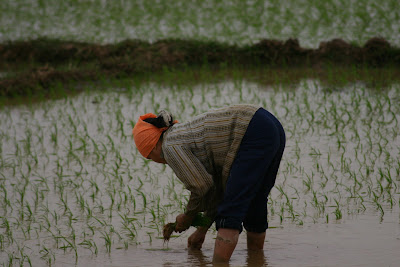
To me this photo captures a piece of the beauty of Vietnam.
Monday morning at a breakfast briefing with Professor Truong Quong Hoc from Vietnam National University we prepared for a day of touring the Temple of Literature and the History Museum. The more we learned of Vietnam’s ancient and rich history, the more we realized how significant and horrific the impact of landmines has been on this beautiful country.

These children that we passed on our way to the Temple of Literature are typical of the beauty and grace of this country which has some how managed to survive war and the ever present landmines. Unfortunately in a country filled with landmines children aren’t safe.

Injuring and killing children is one of the many problems with cluster munitions. According to Jerry White, “these are the bombs that explode and send out little round bombies or bomblets across a half mile radius. With a dud rate of 20% this military litter becomes like de facto landmines. Kids find them on the ground and think they are toys and pick them up and they explode. Many lose their eyes and hands, if not their lives.”

























